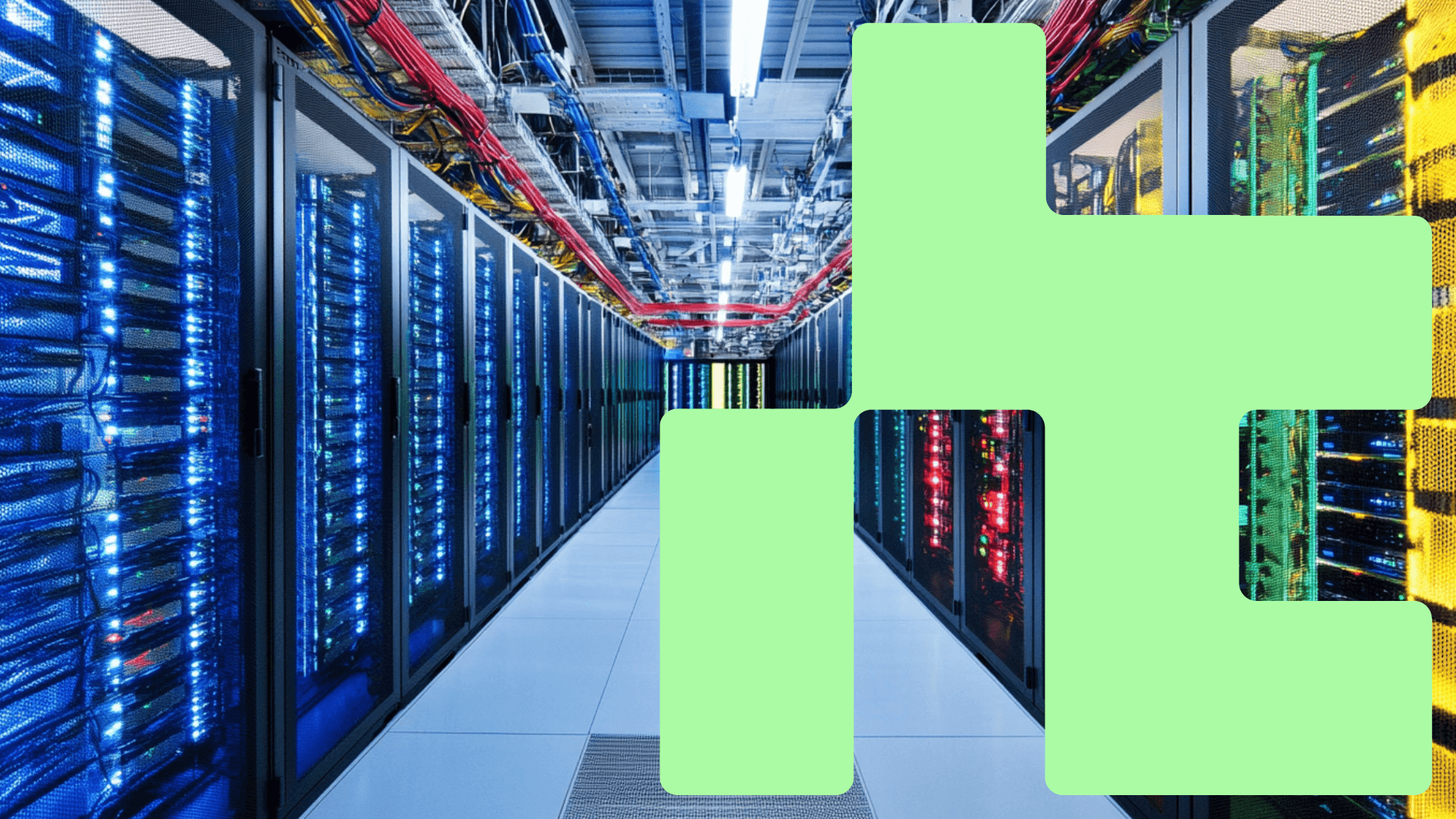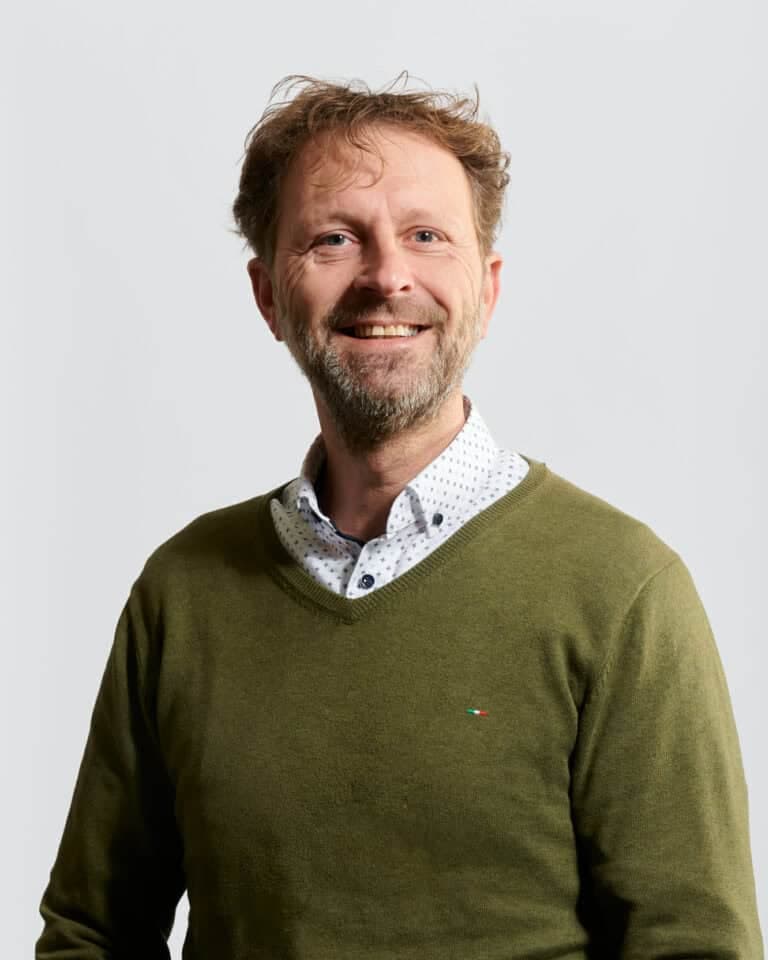Data centers' energy usage soars as efficiency improves
Forecasts see data centers electricity consumption doubling by 2026. We dig into the numbers in this new episode of Behind the Figures.
Published on October 16, 2024

Mauro swapped Sardinia for Eindhoven and has been an IO+ editor for 3 years. As a GREEN+ expert, he covers the energy transition with data-driven stories.
Watching a movie, browsing for flights, or booking a health check are just a few of the actions we do online every day. Data centers are essential to running these services to process, store, and distribute information. At the same time, AI developments need more computing capabilities and, consequently, more computing power. According to the latest estimates by the International Energy Agency (IEA), electricity consumption from data centers can double by 2026.
The latest IEA annual electricity review pointed out that the overall global electricity demand is set to grow in the next three years—at up to a 3.4% rate in 2026. Data centers, AI, and cryptocurrencies are partially driving such growth. In 2022, data centers globally consumed an estimated 460 TWh of electricity, 2% of the world’s electricity demand. Their total energy consumption in 2026 could reach over 1000 TWh— about the amount of electricity Japan consumes.

About Behind the Figures
In Behind the Figures, we examine one figure in every episode. Using charts and graphs, we break down the figures and provide context to help you make more sense of them.
How do data centers work, and what measures can they take to manage their energy consumption? Andrew van der Haar, a senior advisor for energy and sustainability at the Dutch Data Center Association (DDA), helps us answer those questions.
Different data centers
Before delving into the details, it is necessary to give some definitions. There are two main kinds of data centers: colocation and hyperscale ones. Colocation data centers are owned by a company that sells space, computing power, and cooling to multiple companies in a single location. Colocation facilities are the go-to option for companies that need external processing power but cannot afford to have their own data center. A colocation center can serve hundreds and even thousands of customers.
Hyperscale data centers (HDCs) have greater processing power and are owned and operated by a company they support, such as Google, Microsoft, or Apple. These infrastructures are needed for large-scale cloud and big data storage. HDCs have at least 5,000 servers and 929 m—or 10,000 square feet.
“Energy management is easier when you own the data center because all operations are under your control. In colocation facilities, it all depends on what companies they serve. When serving business companies, most of the energy usage happens during the day, while an e-commerce platform always requires resources,” Van Der Haar explains. Overall, it is all about the profile of each company.
Cutting back on cooling
According to the IEA report, 40% of data centers' electricity demand is for computing, and 20% is for running associated IT equipment. Cooling is behind the remaining 40%. It is critical to keep thousands of servers cool to keep them operating—they produce heat while running, just as your laptop does. Many efforts are being made in this regard.
In addition to standard ventilation systems, one common practice is to use free cooling using external air to refresh the data center. This method can slash power draw from 10 to 50%, depending on geographical location. Adiabatic cooling systems are another option. They work by using water to lower the temperature of the surrounding air.

AI and automation are also helping. “Considering temperature, electricity costs, and power needed, data centers use algorithms to manage their power consumption. They take action especially when approaching the setpoint– the data center temperature agreed with their customers ed.– to optimize energy usage,” clarifies Van Der Haar. In addition, the newest server designs use cooling systems directly on the chip.
Efficiency is improving
Data centers' energy demand is increasing, but their energy efficiency is also improving. Power usage effectiveness (PUE) is a metric used to determine a data center's efficiency. PUE is calculated by dividing the amount of energy entering the facility by the power used to run the IT equipment. Expressed as a ratio, the closer the PUE value to 1 is, the more efficient a data center is. Overall, colocation and hyperscale facilities are more efficient. In the past years, efficiency worldwide has increased, as shown in the chart below.
A trend Van Der Haar identifies is the higher request for power newly built data centers make. Parallel to that, calculation density is also soaring, with more processing units concentrated in the same space. “However, when redesigning a data center to accommodate more computing power, companies also reshape the facility as a whole. They might have more units to cool, but with updates to their infrastructure and layout, they don’t necessarily need more power.”
What about the Netherlands?
In the Netherlands, there are 187 colocation centers, 3 hyperscalers, and 6328 enterprise datacenters. DDA has over 115 members. Most of them are in the North Holland province, particularly in Amsterdam and its outskirts, such as the Schiphol area.
According to Van Der Haar, most DDA members are retrofitting or redesigning their facilities. Although the industry is thriving, expansion is constrained by the energy grid connection limits. While growth is not possible in and around Amsterdam anymore, other possibilities exist outside of the North Holland province.
The expert also says that 99% of the energy DDA members use comes from renewable sources. “Many data centers explicitly agree to buy renewable energy in the power purchase agreement—the contract they stipulate with their energy provider. Furthermore, data centers are also installing batteries to store energy.”
What’s next?
In 2022, around 1240 data centers operated in the European Union, consuming nearly 4% of the bloc’s electricity demand. An interesting case is Ireland, where data centers accounted for 17% of the country’s electricity consumption in 2022. The Irish corporate tax rate is one of the lowest in the continent, stimulating the industry's growth. The IEA forecasts data centers to consume 32% of the country’s total electricity demand in 2026.
With AI driving the demand for data centers, computing energy needs will also increase. Hopefully, technology development and wider renewable energy usage can keep powering our digital life without compromising our planet.
